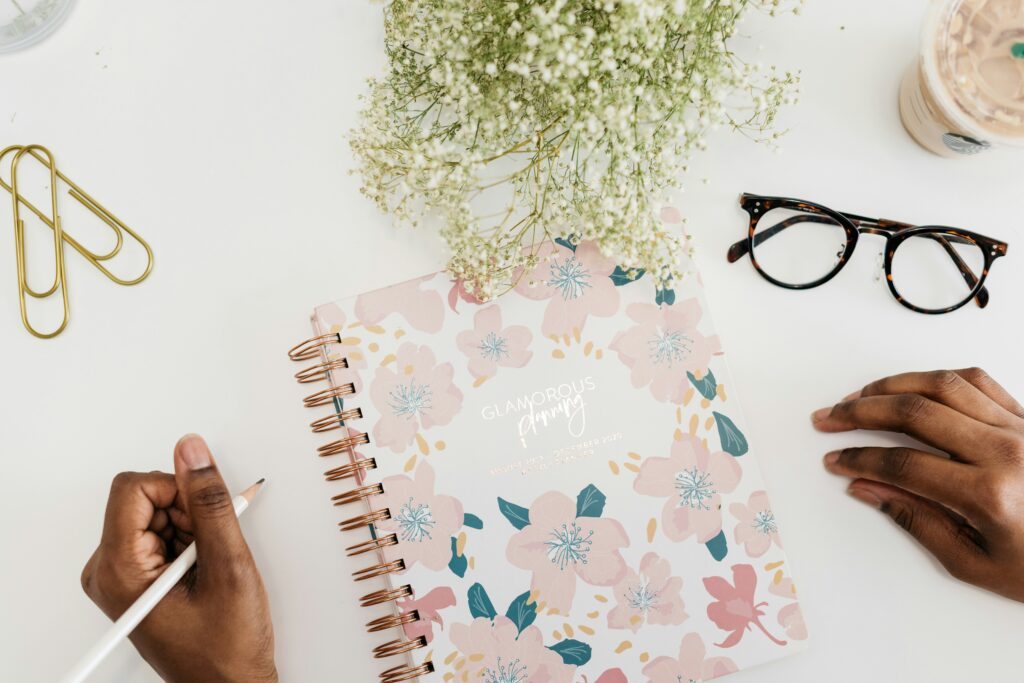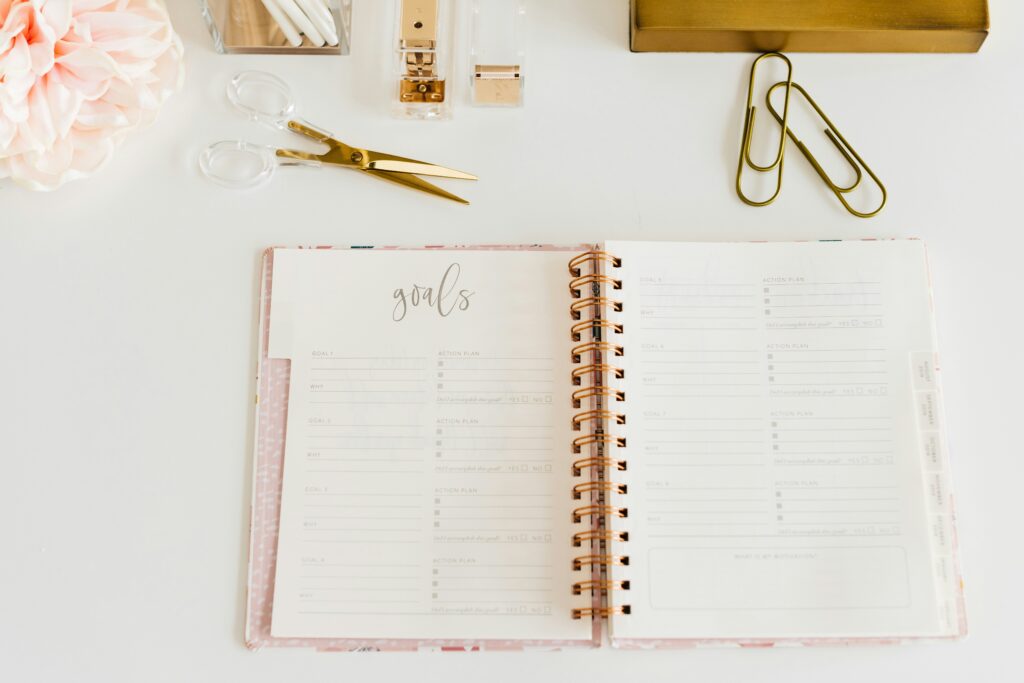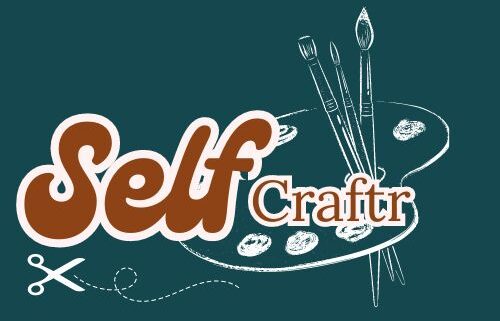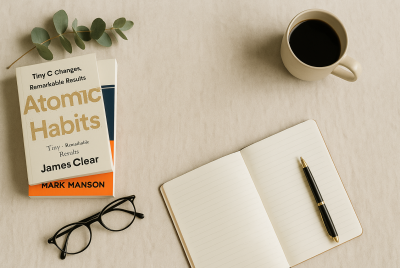Goal Setting Planner That Actually Works
We may earn a commission for purchases made using our links. Please see our disclosure to learn more.
Ever set a goal, get excited for a week, then totally forget about it? You’re not alone. The difference between dreamers and doers often comes down to one tool: a goal setting planner. With the right planner in hand, your goals stop being vague ideas and start becoming real, trackable progress.
Whether you’re trying to boost your career, improve your habits, or finally launch that side hustle, this guide will help you choose—and actually use—a planner that fits your lifestyle.
Why Goal Setting Matters More Than Ever
From Vision to Execution
Big dreams are great. But without a system, they tend to fade fast. A goal setting planner bridges the gap between vision and action, helping you stay grounded and intentional.
The Psychology Behind Writing Down Goals
Studies show that writing your goals makes you 42% more likely to achieve them. It gives your brain a clear path forward and reinforces accountability. Simply put, pen to paper equals power.
Why You Need a Goal Setting Planner
Planning vs. Winging It
We all have the same 24 hours, but some people make them count. Why? Because they plan. A planner helps you organize your days around your priorities, not just your to-do list.
The Power of Daily Consistency
Small, consistent actions stack up. A planner helps you identify what matters most each day, so you’re not just busy—you’re productive.
What to Look For in a Quality Goal Setting Planner
Must-Have Features
Look for a planner that includes:
- SMART goal setting templates
- Monthly and weekly breakdowns
- Daily focus or priority sections
- Progress and reflection pages
- Habit trackers
Optional (But Helpful) Extras
- Vision board pages
- Motivational quotes
- Gratitude prompts
- Time-blocking features
Should You Go Digital or Paper-Based?
Paper planners offer fewer distractions and a tactile sense of accomplishment. Digital planners are flexible and portable. Choose what fits your routine best.

Top 5 Goal Setting Planners to Stay on Track
1. Full Focus Planner
Perfect for high achievers. Created by productivity expert Michael Hyatt.
Why you’ll love it:
- Focus on quarterly goals
- Daily “big three” priorities
- Built-in goal review sessions
2. Panda Planner
A great option if you’re juggling productivity with mental wellness.
Highlights:
- Science-backed layout
- Gratitude + mood tracking
- Monthly and weekly planning
3. Legend Planner
A sleek, all-in-one personal development tool.
Standout features:
- Life clarity exercises
- Built-in vision board
- Budget tracking included
4. Clever Fox Planner
Colorful, affordable, and loaded with powerful prompts.
Why it works:
- Goal-setting framework included
- Habit tracking and gratitude sections
- Weekly review pages
Scientific Insights on the Power of Goal Setting
Understanding why goal setting is so powerful doesn’t just come from personal experience—it’s also backed by solid scientific research. Studies have shown that both the process of setting goals and the act of tracking them can have profound effects on motivation and success.
The Neuroscience Behind Goal Setting
Research has revealed that goal setting is not only a cognitive process but also a neurobiological one. Setting clear goals engages the brain’s reward system, triggering the release of dopamine when progress is made. This creates a cycle of motivation that drives further action, making goal setting an essential component of behavior change. For an in-depth look at the neuroscience of goals, check out this review on the neuroscience of behavior change.
The Power of Writing Goals Down
Studies have demonstrated that people who write down their goals are significantly more likely to achieve them compared to those who simply think about them. A compelling study from Michigan State University found that individuals who wrote their goals, created action plans, and shared weekly progress reports had a 76% success rate. This highlights the importance of using a structured method, such as a goal setting planner, to turn abstract ambitions into actionable plans. Learn more about the evidence-based approach to achieving goals in this article on goal setting effectiveness.
How to Use a Goal Setting Planner Effectively
Create a Weekly Planning Ritual
Set aside 20–30 minutes each Sunday to review last week and prep for the next. This keeps you aligned and reduces decision fatigue.
Track Progress Without Overwhelm
Don’t try to fill every section perfectly. Use your planner as a flexible guide, not a rigid rulebook.
Make It a Mindfulness Practice
Use your planner time as a break from screens. Reflect. Breathe. Reset your mindset.
Avoid These Common Mistakes
- Writing too many goals at once
- Skipping weekly reviews
- Using your planner inconsistently
- Treating it like a chore
Benefits of Using a Goal Planner Long-Term
Builds Self-Discipline
The more often you show up for your goals, the stronger your willpower becomes.
Increases Productivity and Focus
You’ll spend less time on distractions and more time doing what matters.
Encourages Mindful Living
A planner keeps you focused not just on doing more—but on doing what matters most.
Digital vs. Physical: Which Planner Type Wins?
Pros and Cons of Physical Planners
✅ Tangible, distraction-free
✅ Boosts memory and focus
❌ Harder to carry everywhere
Pros and Cons of Digital Planners
✅ Easy to edit and carry
✅ Great for reminders
❌ Can be lost in screen clutter
The Hybrid Approach
Use a physical planner for long-form thinking and a digital calendar for reminders or meetings. Best of both worlds.

Conclusion: Start Planning for a Better You
A goal setting planner is more than just pages and prompts. It’s a commitment to yourself—to live intentionally, stay focused, and move forward with purpose.
Pick one that aligns with your personality, commit to using it for 30 days, and see what changes. The shift won’t just be in your productivity—it’ll be in your mindset.
👉 Ready to get started? Choose one of the planners above and start designing the life you want—one goal at a time.
Frequently Asked Questions
What’s the difference between a goal setting planner and a regular planner?
Regular planners focus on dates and appointments. Goal setting planners help you structure, track, and reflect on personal or professional goals.
Can a goal setting planner really help me stay motivated?
Yes! Seeing progress in writing fuels your motivation. Plus, regular reflection keeps your goals front and center.
Is digital better than physical for goal setting planners?
It depends on your workflow. Physical planners encourage deeper thinking. Digital is better for portability. Try both and see what sticks.
How often should I update my goal planner?
Ideally daily, even if it’s just for five minutes. Add a longer weekly review session for reflection and realignment.
What’s the best time of day to use a goal planner?
Morning works best for setting intentions. Evenings are great for reviewing wins and planning ahead. Experiment to find your rhythm.




